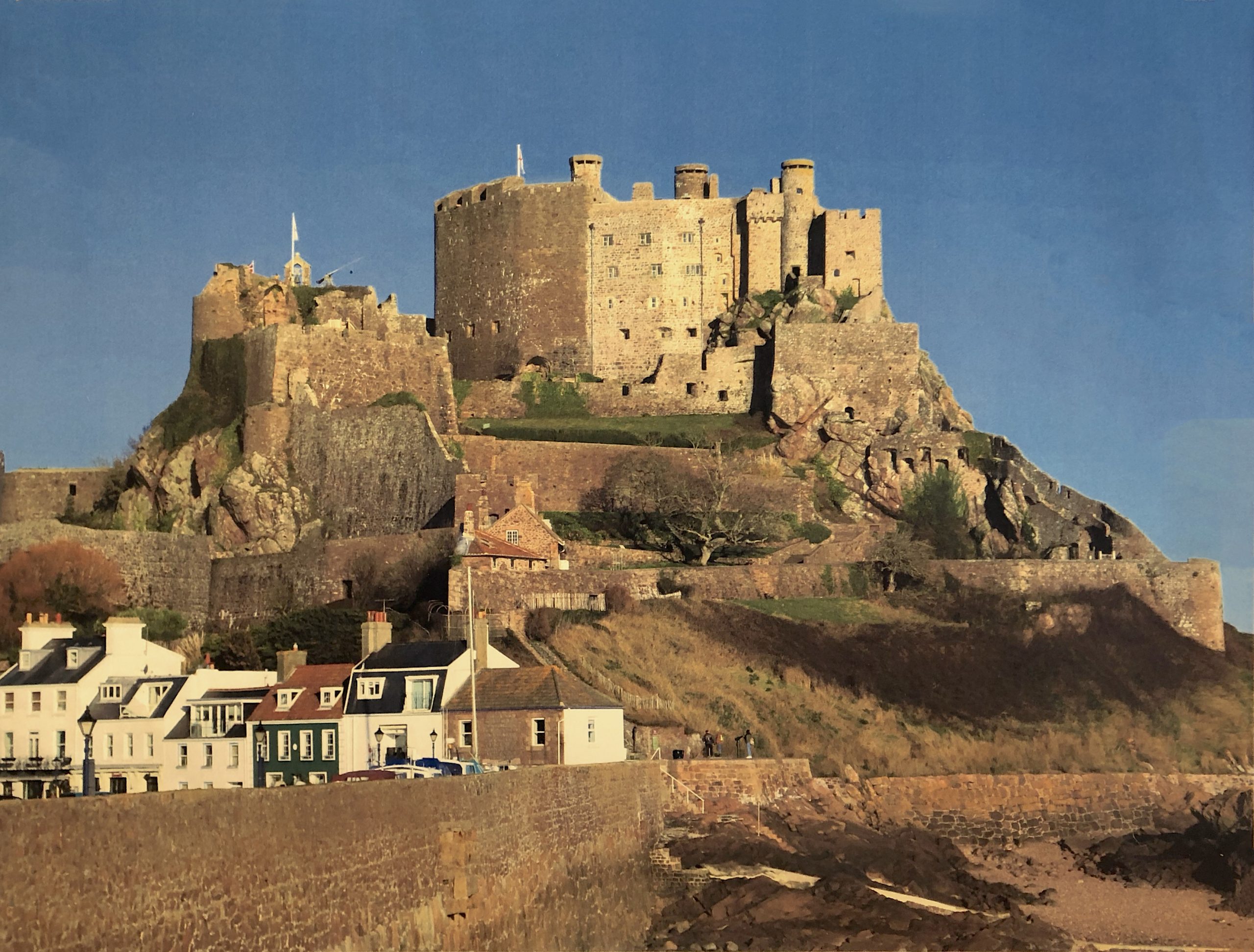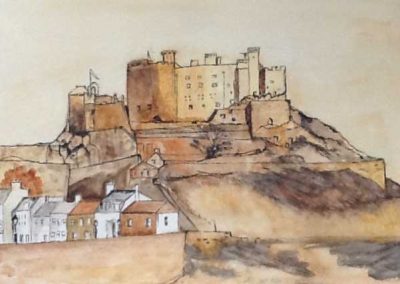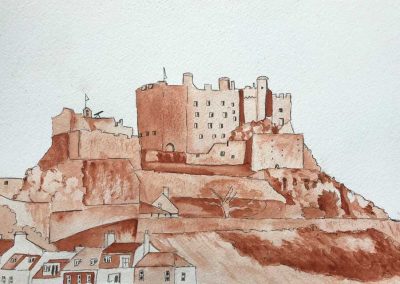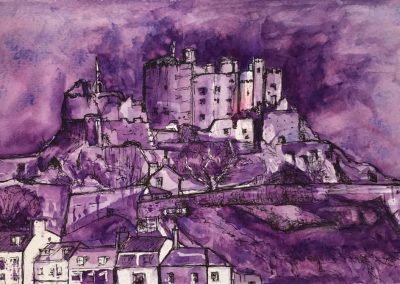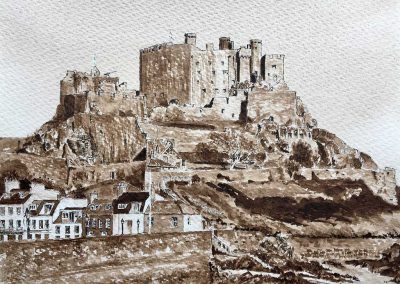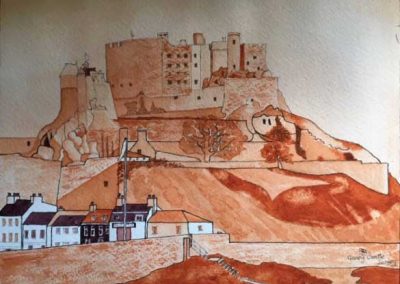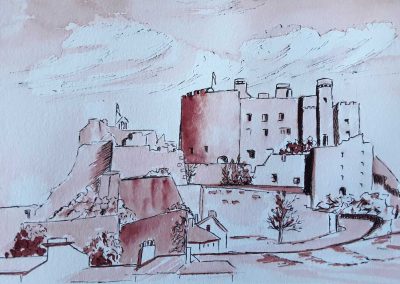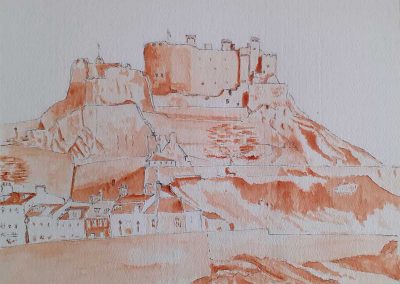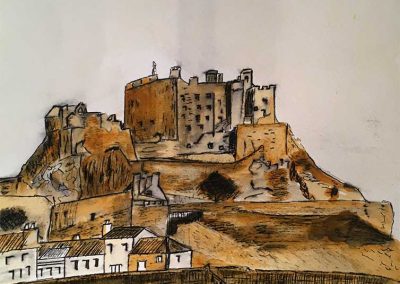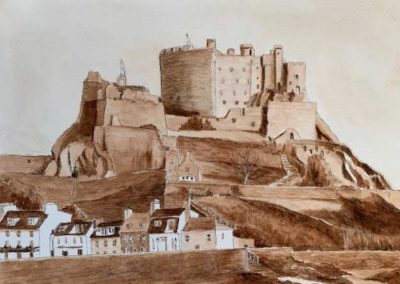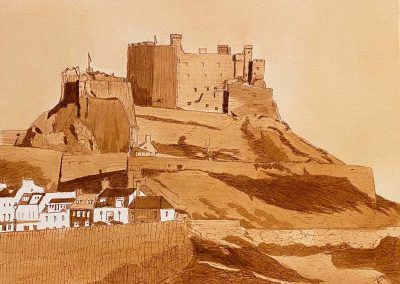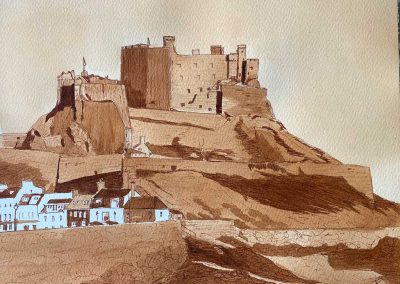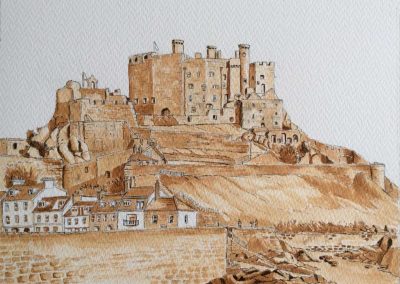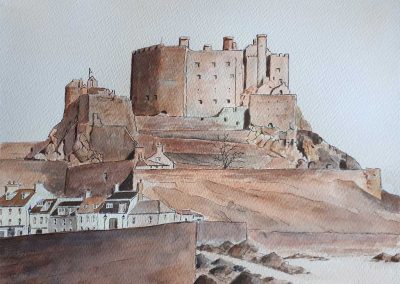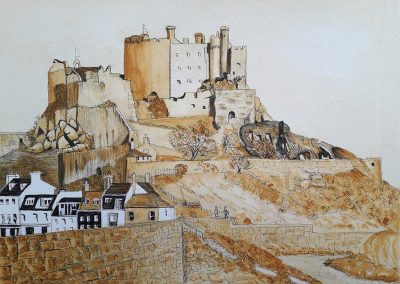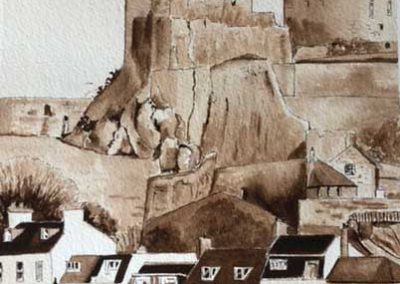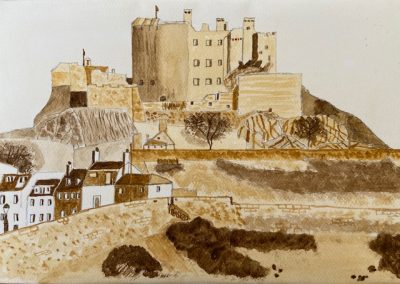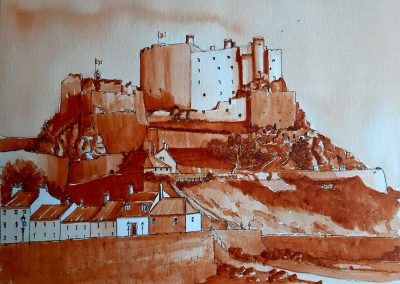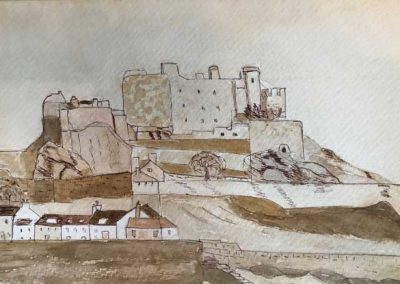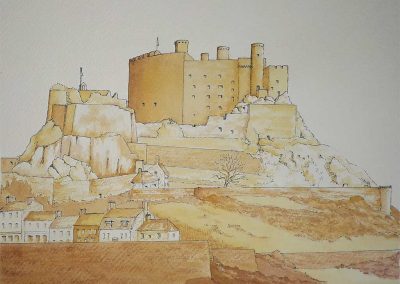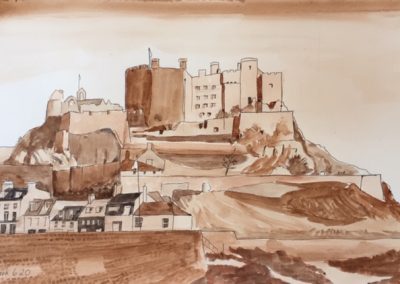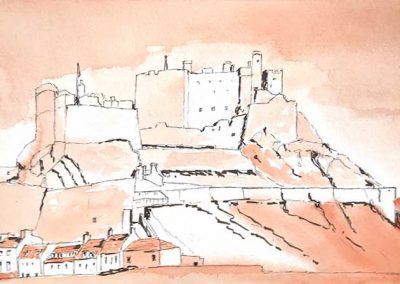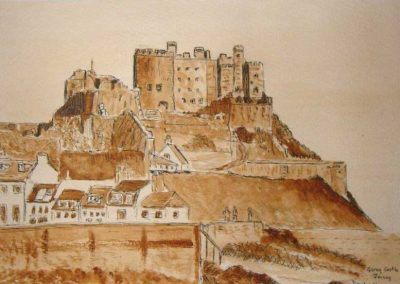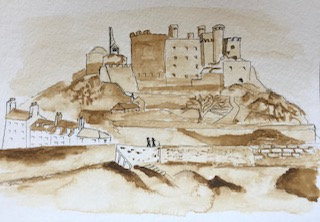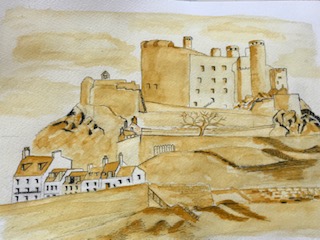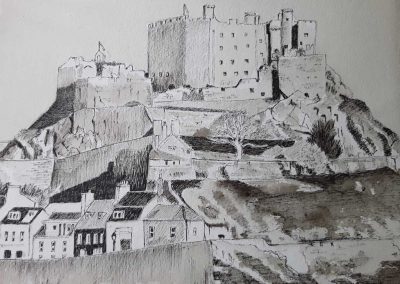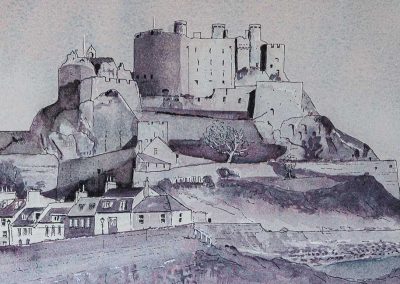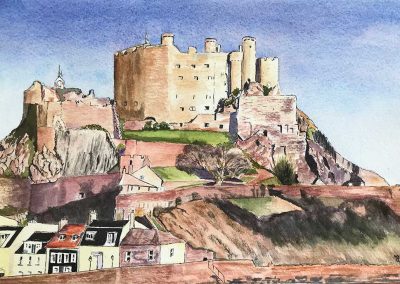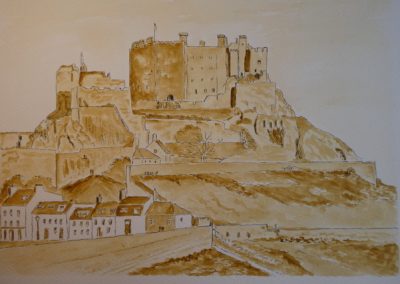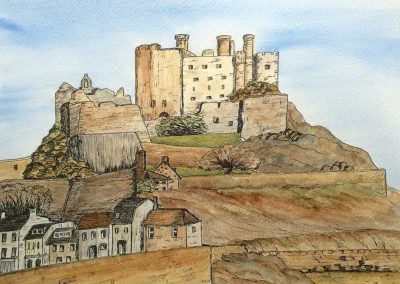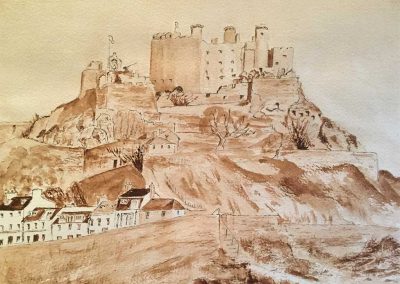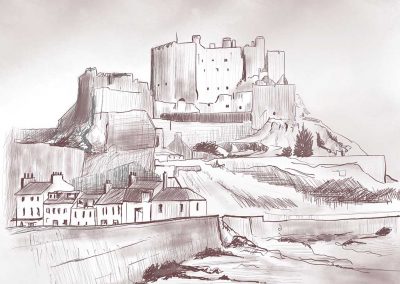Watercolour
Session 3 – Gorey Castle Jersey. Ink and wash
Introduction to – Gorey Castle in Jersey
Gorey Castle Jersey
The photograph was taken on a crisp, sunny winter’s day. There is a strong light from the right. The tones created will help with the ins, outs and shapes of the castle and rocks.
The composition and layout of the subject is yours. You might consider cropping and even changing the format. Do think carefully about the houses towards the bottom left. As we will be using a single watercolour for the wash, the houses can bring the lightest tones could provide a useful extreme against the darker tones.
There will be three sections to this exercise:-
1. A pencil drawing.
2. The addition of ink.
3. A wash of a single colour using watercolour.
Starting the drawing stage
As mentioned the first stage to this project begins with a careful drawing, arguably the most challenging part of the exercise.
A good starting point would be two horizontal lines and two vertical lines:-
1st horizontal line- top of the sea wall seen bottom right.
2nd horizontal line – top of wall and turret, again on the right above the one drawn previously.
1st vertical line – right hand edge of the right rectangular tower.
2nd vertical line – left hand edge of the main part of the castle.
Use all four lines as a guide to proportions and locations of parts of the subject. They will also assist in assessing how lines on the subject rise and fall. For instance the 1st horizontal line will help with the sea wall against the houses. Notice how it slightly drops from right to left as it moves to the edge of the subject.
Further information on the drawing as seen in the video above and the ink work.
Here you have choice on how you present the ink marks. For instance there is one approach shown and described as used by Frances Towne.
It easy to recognise the ink work as a strong and permanent line. However the marks you make will likely be personal to you, responding to the way you use the pen. We all have our own style in the way we write – I am suggesting your ink drawing will similarly individuality.
What I would like you to consider, is where you place the ink and try to be consistent in this respect. If you decide to indicate some texture, there is variety of surfaces to consider. Ideally your pen needs to be a permanent ink, so the marks you make will not run when you add paint.
You might want to clean away any pencil lines once the ink work has been completed, but give the ink an hour or so before the eraser is used – just to make sure.
More on the ink work and information on the wash
For the wash please use a single colour to create a monochrome painting as the example by Frances Towne oppostite. Colour options could be Burnt Sienna, Burnt Umber, Raw Sienna.
Do be sensitive to the amount of water mixed with the pigment. This will give the variation required to carry the tonal range or the strength of the colour. It is best to work from light to dark. The sunshine on the houses would work well for being the white of the paper. It is worth noting where the darkest tones appear – for instance the dark of near shadows, inside certain windows etc., The range of tone will then exist between these two extremes.
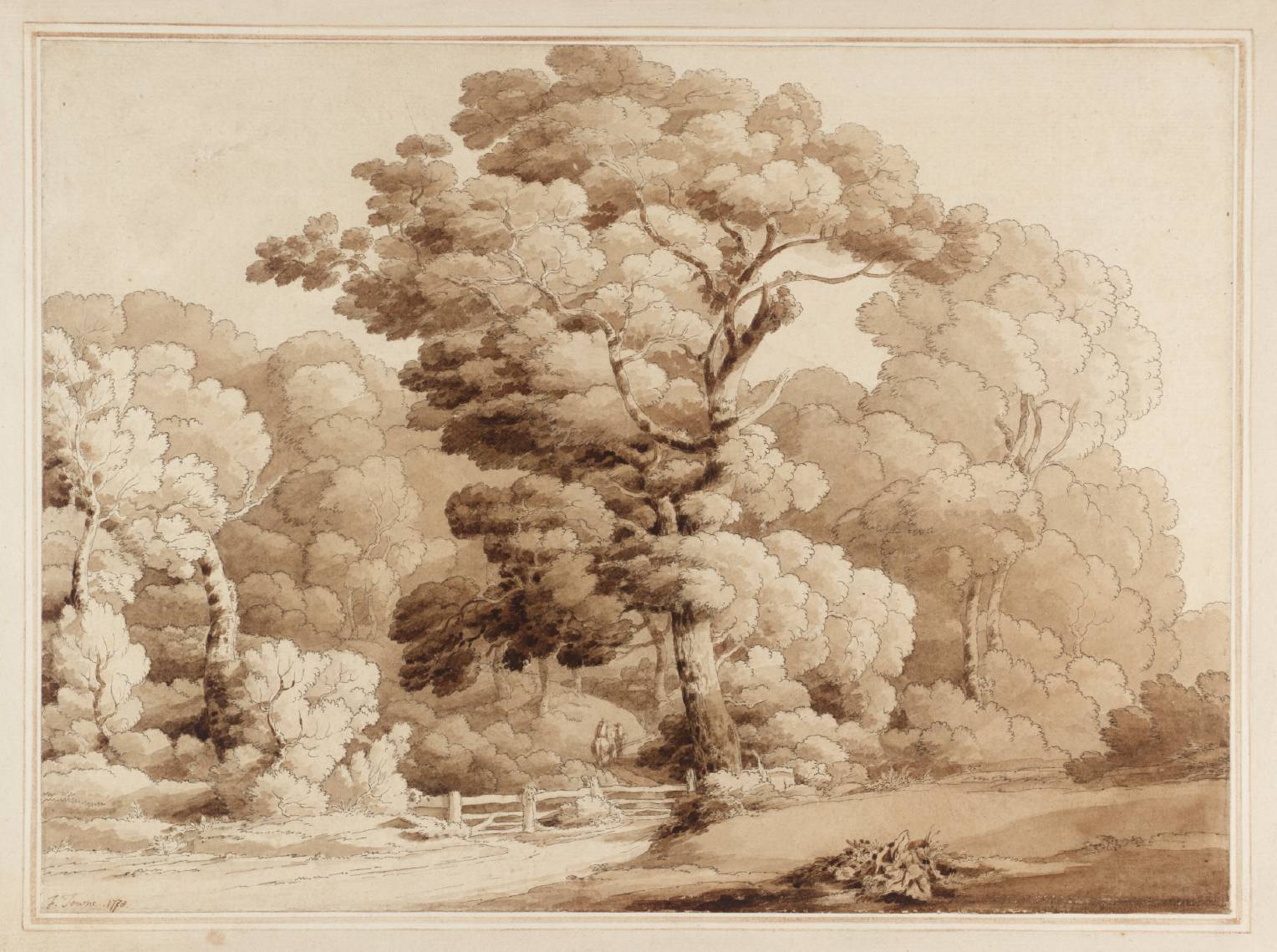
Frances Towne – an example of ink and wash
Francis Towne (1729-1816) a well respected landscape painter of his day. His individual approach to watercolour and ink can be seen in the work he produced during travels in the Lake District, Wales and Europe. Ink was used to precisely define the outline of shapes within the composition and to occasionally ink out detail and texture. He generally left out line in the sky, along with edges to shadows and tonal changes, reserving these for paint alone.
An example of his approach can be seen in his painting above of A View at Pines the Seat of Sir Stafford Northcote Bart near Exeter, painted in 1778 (curtesy of Tate Britain). His work was seen as revolutionary at the time. During the late 1930’s it became popular and sort after. Tate Britain hold an extensive collection.
Conclusion.
We will present your finisahed work in the gallery to be created at the bottom of this page. You will note there are changes to the Art School website, this is all part of the planning as we move forward and look to introducing a Summer Term beginning next month – more details later.
To send a photograph of your work, please email these to me at:-
chas@patchingsartcenre.co.uk
I look forward to seeing your work ideally by Monday 22 June, following which we will show the gallery. If you have any queries, please use the email link below.
I hope you enjoy this exercise.
Chas
Gorey Castle - Gallery
Ask Chas
If you need some advice please do not hesitate to contact me, by filling out the form below:
